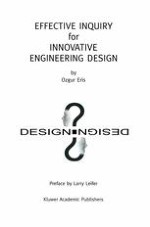2004 | Buch
Über dieses Buch
Effective Inquiry for Innovative Engineering Design presents empirical evidence for this claim. It demonstrates a unique attribute of design thinking by identifying and characterizing a class of questions called "Generative Design Questions". These questions are frequently asked by designers in dialog. Their use constitutes a fundamental cognitive mechanism in design thinking. Their discovery stems from another finding of the work: a conceptual duality between questions and decisions that is engraved deep within the design process.
This duality challenges a view that treats designing as decision making. Decisions form the tip of the iceberg; Questions keep it afloat: Can an effective decision making process be performed without having high quality information? Can high quality information be acquired and generated without performing an effective inquiry process? The answer to both questions is no, and underscores the importance of our quest to better understand the role of inquiry in design.
Anzeige
